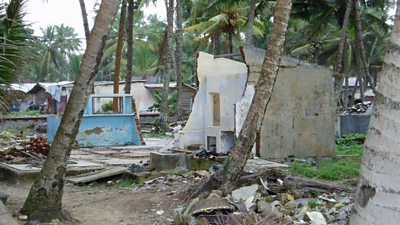Generic risk assessments covering disasters e.g. earthquake, tsunami, floods may be written by the High Risk team for large events & deployments. These can be found on ENPS or possibly on the Safety Alert section of the MyRisks site. You can also check with your local Safety Adviser.
What Can Go Wrong?
- Accidents from tripping, sharp objects and damaged infrastructure
- Fragile and damaged buildings and services could result in electric shock, burns, gas leaks/explosion, steam/scalding, exposure to sewage and the related health risks
- Lack of welfare and infrastructure ie communications
- Disease outbreaks
- Risks to personal security due to breakdown in law and order
- Becoming a burden on the local community due to poor planning
- Emotional trauma
Legal/�������� Requirements
This guide provides important background and information to inform your planning, assessment and arrangements. Reading it does not make you an expert, nor preclude the need for separate risk assessment. If you require any additional information or clarification you should always contact the Safety Advice Line or High Risk team, as appropriate.
Control Measures
General Controls
- Review the scale, location and extent for the disaster and consider if it is High Risk or in a Hostile Environment.
- Wear tough sensible shoes and clothing.
- Be alert to potential dangers and assist other team members.
- Avoid moving outside at night and take torch / head light.
- Recce the area before moving in.
- Be alert to damaged buildings and infrastructure (above, on and below ground). Never enter damaged buildings / structures.
- Don’t stand close to or under structures - to avoid falling material.
- Avoid wading into water when you can’t see the bottom.
- Never touch or approach damaged cables or pipe work.
- Don’t smoke or light fires unless checks have been made that gas or other propellants are absent.
- Listen to local briefings and emergency services advice and weather forecasts (local and request from �������� Weather). Also do your research before setting out on task.
- Plan to take enough water, food, shelter, power sources and medical supplies to be self-sufficient. Grab bags with everything you will need are available from Safety Stores.
- Waterproof kit and equipment if necessary. Waterproof bags are available from Safety stores.
- Organise shelter away from damaged structures (particularly industrial) or further damage from aftershocks.
- Organise breaks to avoid extreme fatigue.
- Ensure you have contact numbers and means of communicating with base, keep them informed of the situation and your location.
- It is likely that the communications systems will be affected so a satellite phone and Began are recommended.
- Be aware that desperate people may take extreme & uncharacteristic actions to take your food and equipment.
- Keep a low profile and avoid displaying supplies or wealth.
- The increase in stray animals could increase risk of rabies in endemic areas.
- Snakes may be displaced from their natural environment and may be more dangerous.
- Consider the challenge of local transportation - local travel infrastructure will often be damaged; research the local impact if possible and consider that there may be landslides, bridge collapse, flood etc.
- Liaise with local authorities and any charities that may have already been first respondents on scene for up to date details.
- Consider whether there will be further predicted crises that will impact on the area – ie more storms, flooding, aftershocks, landslides etc.
Portable power from generators
- Generators must be sourced and managed by a reputable supplier. The supplier is also responsible for managing the generator and the support infrastructure including fuel and connections. See the Production Electrical and Lighting page for more information.
Disease
- Ensure you read the section on Disaster Coverage - Health Aspects to reduce the risks to health.
Hostile Environments & High Risks
- Contact the High Risks team for guidance and consult the other topics in the High Risk Topic List
Earthquakes
- There is earthquake related guidance which can be obtained from the Safety Team. This provides full details for when deploying to an earthquake affected area.
Emotional trauma
- Think about any disturbing story lines and possible impact on mental health and discuss before deployment.
- Carry out debrief with colleague or Line Manager after potentially traumatic event / exposure and further debriefs as needed.
- Referral into �������� support systems including EAP and TRiM Network.
- Refer to the News Group page on Trauma for more information.
Division Specific Issues
- This guidance is for Journalists who are first responders covering disasters.
FAQs/Did You Know?
- There are no FAQ.
Recommended links
- [Gateway]
Dangerous deployment topics
 Disaster CoverageA guide to covering disasters.
Disaster CoverageA guide to covering disasters.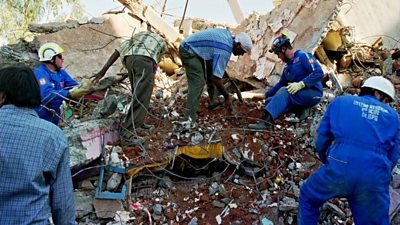 Disaster Coverage - Health AspectsA guide to health risks when visiting areas subject to natural or man-made disasters.
Disaster Coverage - Health AspectsA guide to health risks when visiting areas subject to natural or man-made disasters.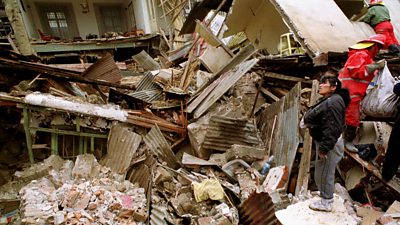 EarthquakesA guide to working in areas affected by earthquakes.
EarthquakesA guide to working in areas affected by earthquakes. Fires - Buildings and BushfiresA guide to deployments of journalists and crew to large building fires and bushfires.
Fires - Buildings and BushfiresA guide to deployments of journalists and crew to large building fires and bushfires.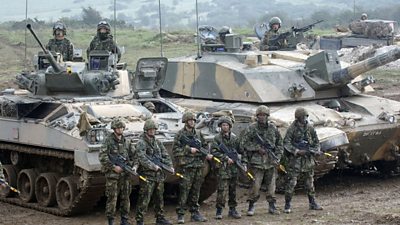 Hostile EnvironmentsHostile Environments and Travel Advisory information and Country List
Hostile EnvironmentsHostile Environments and Travel Advisory information and Country List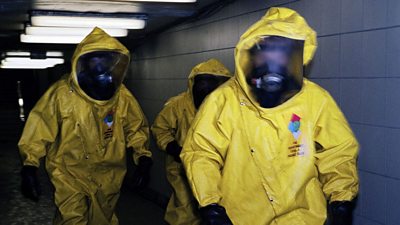 Industrial Spills and Chemical, Biological, Radiation HazardsA guide to chemical, biological and radiation related hazards.
Industrial Spills and Chemical, Biological, Radiation HazardsA guide to chemical, biological and radiation related hazards.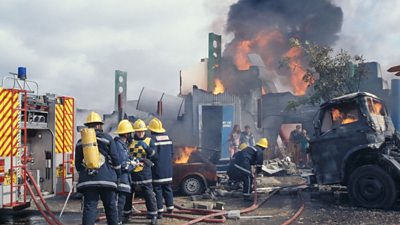 Trauma and PTSDA guide to dealing with trauma or a traumatic event.
Trauma and PTSDA guide to dealing with trauma or a traumatic event.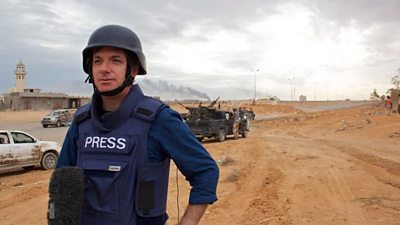 Safety Equipment StoresOur safety equipment store details
Safety Equipment StoresOur safety equipment store details Terrorist Bomb IncidentsA guide to covering bomb story threats
Terrorist Bomb IncidentsA guide to covering bomb story threats
High Risk topics
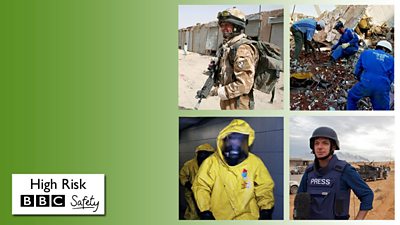
 CBRN and Industrial SpillsA guide to chemical, biological and radiation related hazards.
CBRN and Industrial SpillsA guide to chemical, biological and radiation related hazards.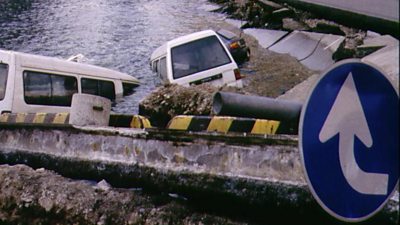 Crisis Management and Security SupportThe �������� and its contractors are sometimes required to work in difficult and challenging circumstances. Safety and security issues may occur either during programme making or following transmission.
Crisis Management and Security SupportThe �������� and its contractors are sometimes required to work in difficult and challenging circumstances. Safety and security issues may occur either during programme making or following transmission. Disaster CoverageThis information should be used during an initial response to a disaster and may be superseded by a specific risk assessment.
Disaster CoverageThis information should be used during an initial response to a disaster and may be superseded by a specific risk assessment. Disaster Coverage – Health AspectsA guide to the particular health risks when visiting areas subject to natural or man-made disasters.
Disaster Coverage – Health AspectsA guide to the particular health risks when visiting areas subject to natural or man-made disasters. EarthquakesThis Guide helps you decide how to manage risks in the event of an earthquake. It applies to those living and working in an earthquake area on how to prepare, as well as to journalists covering the aftermath of an earthquake.
EarthquakesThis Guide helps you decide how to manage risks in the event of an earthquake. It applies to those living and working in an earthquake area on how to prepare, as well as to journalists covering the aftermath of an earthquake. [�������� Network only] PTK Destinations, the ��������'s Hostile Environment Country site is the best way to plan and manage risk for �������� productions.
[�������� Network only] PTK Destinations, the ��������'s Hostile Environment Country site is the best way to plan and manage risk for �������� productions.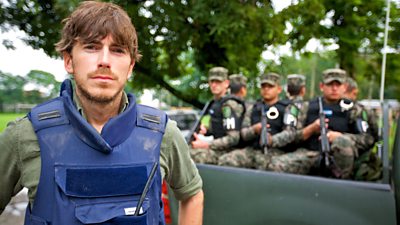 Security on LocationThis Security Guideline provides measures to help mitigate the security threats associated with production activities on location, including door-stepping, covert filming, working with crowds and public order issues.
Security on LocationThis Security Guideline provides measures to help mitigate the security threats associated with production activities on location, including door-stepping, covert filming, working with crowds and public order issues. Terrorist Bomb IncidentsA Guideline for staff covering stories on terrorist bomb threats on location, or at the site of an unexploded bomb (UXB). It could also be of relevance at the site of an industrial explosion.
Terrorist Bomb IncidentsA Guideline for staff covering stories on terrorist bomb threats on location, or at the site of an unexploded bomb (UXB). It could also be of relevance at the site of an industrial explosion.
More from SSR
- Your platform to record accidents, risk assessments, assurance monitoring and inspections
- Safety Equipment StoresJust one number to call: 0844 800 8875
- �������� Safety GuidelinesAn A-Z of ��������'s Health and Safety Guidelines
- Safety Advice Line: 0370 411 0464 Email: safety@bbc.co.uk
- A-Z of �������� Safety Guidelines
- Accident Reporting and Investigation
- �������� Health & Safety Policy
- Contractors (incl. vetted lists)
- Contributors
- Fire Safety
- Freelancers
- Independent Production Companies
- Risk Assessment
- Safety Alerts
- Safety Responsibilities
- Safety Training
- Sets & Premises Safety Guide
Events guidance - key links:
- Exhibitions
- General Guidance
- Indoor Location Recce Checklist
- Outdoor Location Recce Checklist
- Major Incidents & Emergency Planning
- Marketing and Promotional
- Noise Exposure
- Planning and Management
- Responsibilities
- Responsibilities Form
- Laser Lighting Effects
- Strobe Lighting
- Temporary Stages and Rostra
Health topics - key links:
- (�������� network only)
- Contributors Fitness to Participate
- Display Screen Equipment (DSE)
- (�������� network only)
- First Aid and Welfare on Location
- International Travel - Risks & Health
- Manual Handling
- Mental Health: ��������page
- (�������� network only)
- Personal Health and Wellbeing
- Pregnancy
- Psychological Trauma Support & Trauma Risk Management (TRiM)
- Tiredness and Fatigue
- Travel Health Contacts
�������� High Risk - key links:
- CBRN and Industrial Spills
- Covert Filming
- Crisis Management and Security Support
- Demonstrations, Protests and Crowds
- Disaster Coverage
- Door Stepping
- (�������� network only)
- (�������� network only)
- Public Order
- Safety Equipment Stores
�������� Journalism - key links:
�������� Productions - key links:
- Aerial Filming and Airfields
- Animals: Displaying and handling for performance
- Boats: Working on
- Children and Young People
- Driving
- Electrical Equipment and Systems
- First Aid and Welfare on Location
- Food Safety (Cooking and Catering)
- Remote Location Working
- Roads and Streets: Working by
- Security of Productions on Location
- Stunts
- Tiredness and Fatigue
- Unmanned Aerial Systems (UAS aka Drones)
- Vehicles: Recording in, from and around
- Working at Height: Mobile Elevating Work Platforms
- Working at Height: Tower Scaffolds
- (�������� Network only)
�������� Security - key links:
�������� Sport - key links:
About this site
This site describes what the �������� does in relation to managing its health, safety and security risks and is intended for those who work directly for the ��������.
It is not intended to provide instruction or guidance on how third parties should manage their risks. The �������� cannot be held liable for how this information is interpreted or used by third parties, nor provide any assurance that adopting it would provide any measure of legal compliance. More information
Some links on this site are only accessible when connected to the �������� network
